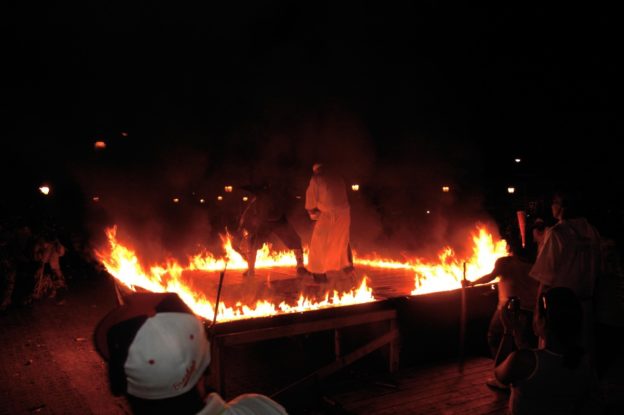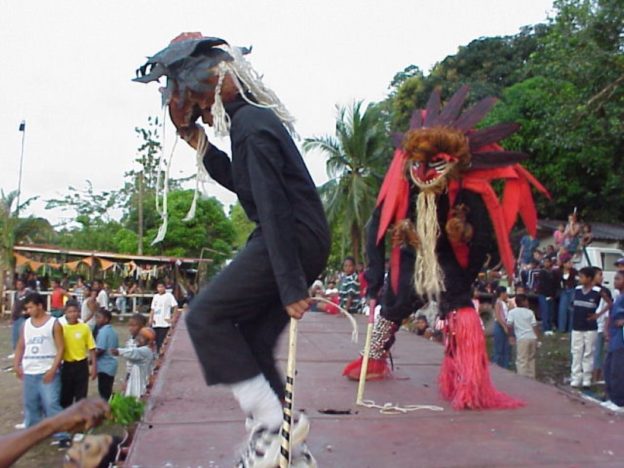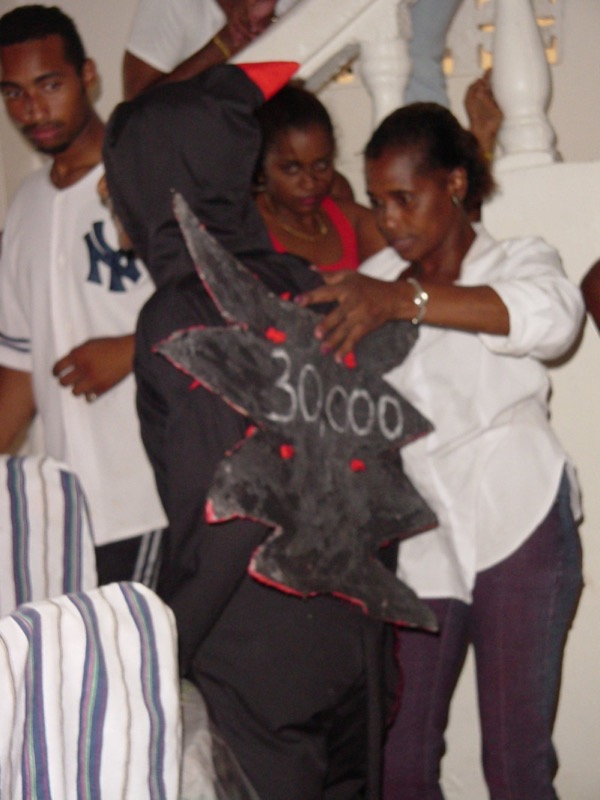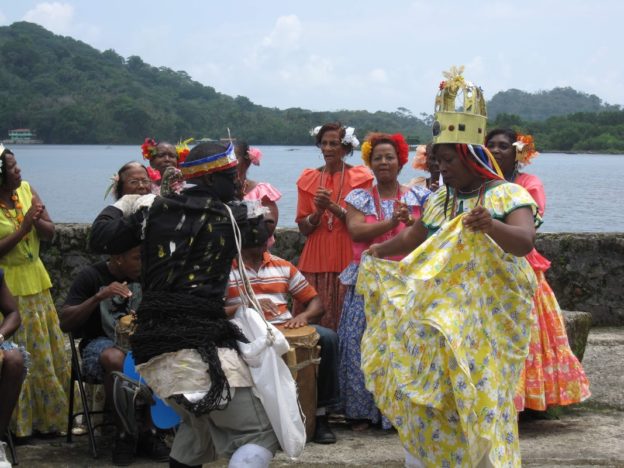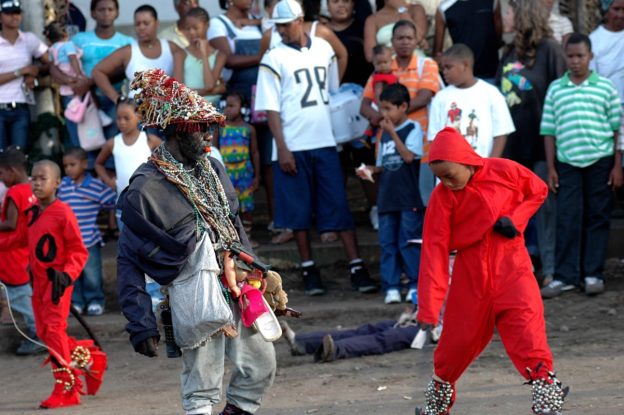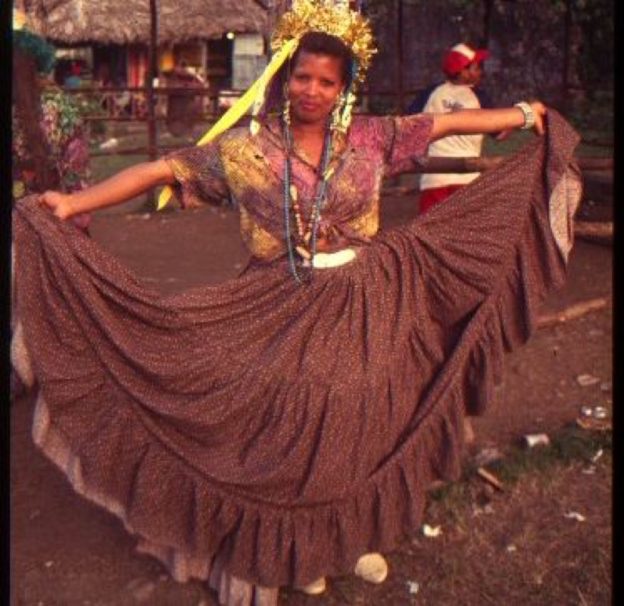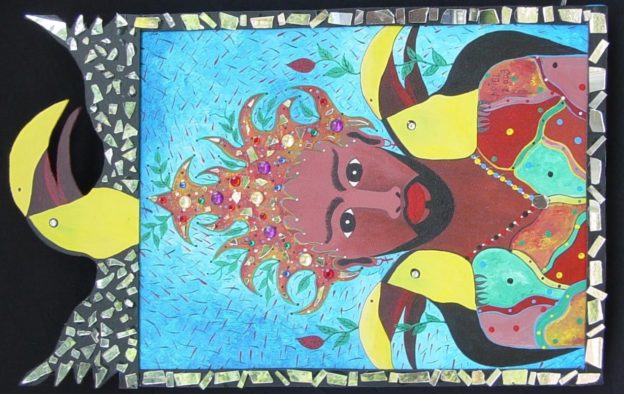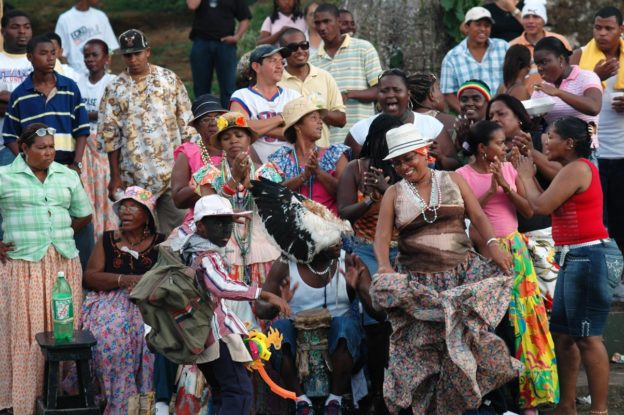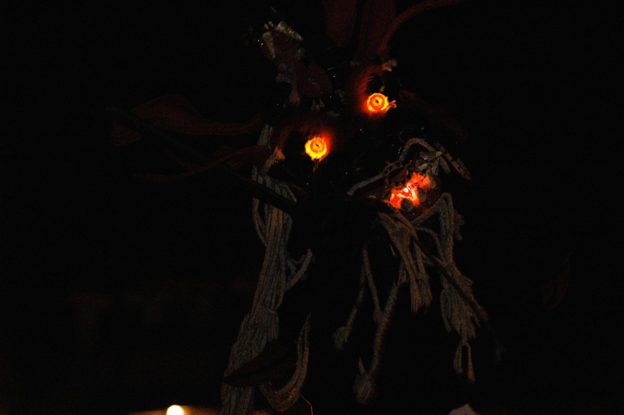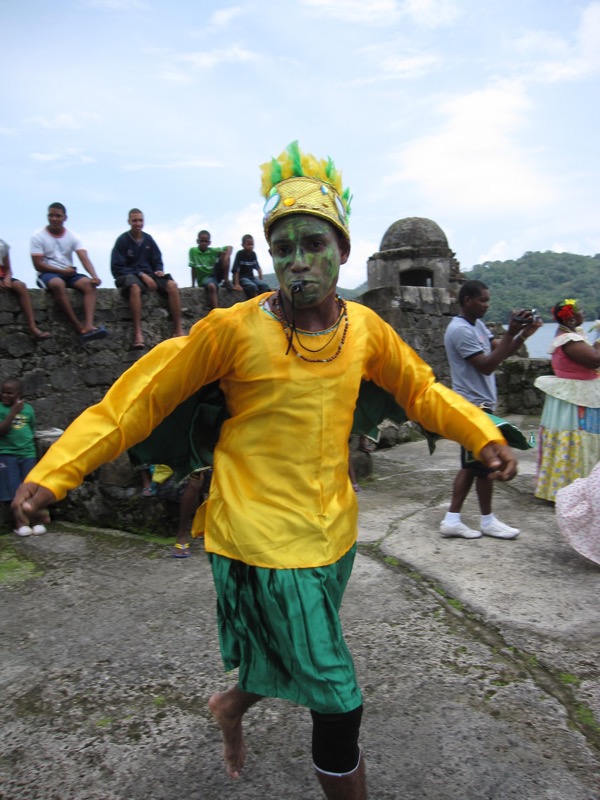In this excerpt, Molinar discusses a few of the changes that he has witnessed in the devil character’s embodiment within the tradition that displease him and responds to Arturo Lindsay’s question regarding the escalating violence he has witnessed with the way some younger practitioners wield their whips.
In this excerpt, Molinar discusses the current existence of three people who play the role of Major Devil in the Congo tradition even though the official narrative about the tradition only signifies one Major Devil character playing at any one time.
In this excerpt, Solís discusses the ritual process that Celedonio used to prepared to “transform” into the Major Devil character.
In this excerpt, Esquina discusses the changes she has seen in the Congo tradition over the course of her lifetime. Specifically, she talks about the ways in which the king’s role has diminished since her father once played it.
In this Excerpt, Esquina discusses the significance of her Congo name “Revellin.”
In this excerpt, Esquina discusses the differences between the costumes of the Congo community of Portobelo and other Congo communities in Panama.
In this excerpt, Esquina recounts watching her father, Vicente Esquina, get dressed as the Congo King and accompanying him to the palenque/palacio to play Congo. Memories of her father’s participation as king mark some of Esquina’s earliest recollections of the tradition.
In this brief excerpt, Esquina discusses occasions on which the community offers presentations of Congo performance locally as well as abroad and her perception of their response to the tradition.
In this short excerpt, Molinar laments some of the escalating violence that he witnessed in the early 21st century.
In this brief excerpt, Esquina discusses the significance of the Congo game and Congo dance including how prominently performing as a primary singer has figured into her life.
